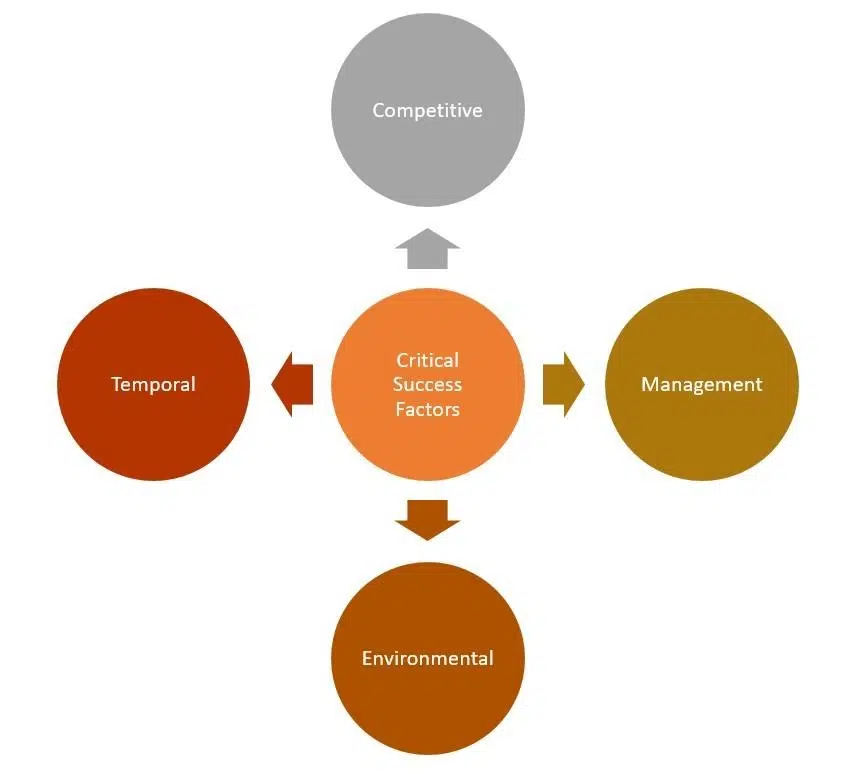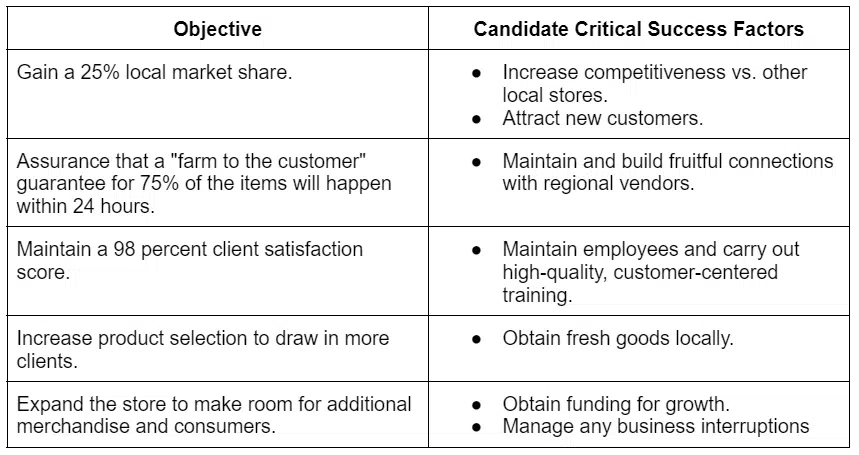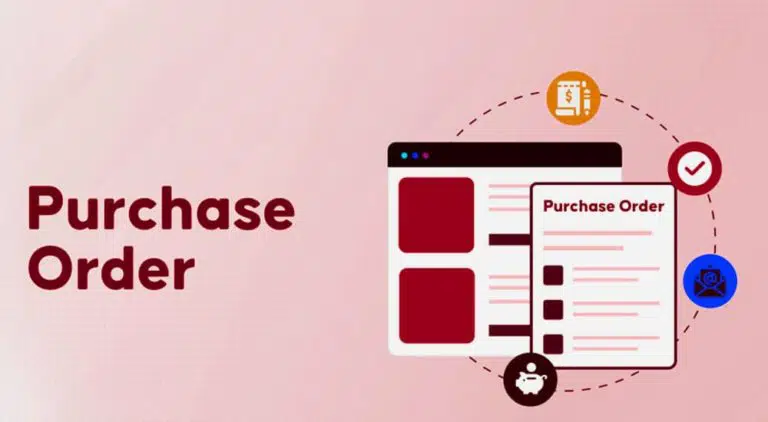Project management is not easy, and often project managers lose sight of the project’s critical success factors (CSF).
These factors cause over 67 percent of projects to go over budget or miss the schedule.
In today’s post, we will talk about the concept of critical success factors, which play an essential part in the project’s overall success.
What are the Critical Success Factors (CSF)?
Critical success factors (CSFs) are “components in a project that are critical to the project completing its aim or goal,” according to PRINCE2.
For an element to complete the deliverable, the conditions of its critical success factors (CSF) must be satisfied. These components must be present for a project to complete its objective successfully.
The following are some potential criteria that will determine the success of house construction projects:
- Construction workers and consumables.
- Staying under budget and within the schedule.
- Creating a specific number of rooms.
Why Do Critical Success Factors Matter?
To deliver a high-quality product, the best efforts must be made.
For instance, project managers can research the competition and develop a more effective strategy to launch a new marketing campaign to increase traffic.
Critical success criteria help the project managers in many ways:
- To utilize time and resources efficiently.
- To identify tasks and their sequence.
- To identify and manage risks.
- To encourage open communication with the team.
When Should Critical Success Factors Be Defined?
Critical success elements should be identified during the planning phase, along with deliverables.
The ideal approach is to limit the number of definitions per deliverable to five. Furthermore, Tracking many critical success criteria is challenging, and situations can become complex.
The History of Critical Success Factors
The term “critical success factor” (CSF) was originally used for the first time in an article published in the Harvard Business Review in 1981 by Bullen and Rockart titled “Chief Executives Define Their Own Data Needs.” The previous work of other authors, such as Aristotle, Von Clausewitz, Drucker, Pareto, and Daniels, contributed to the method’s widespread reputation.
It was first developed for Information Systems (IS) to assist in identifying important information in project management. CSF evolved into a management tool throughout time, allowing for more precise determination and definition of management priorities.
D. Ronald Daniel, an employee of McKinsey & Company, is credited with developing the idea of success factors in the year 1961. In 1981, John F. Rockart made improvements that improved the technique. 1995 saw James A. Johnson and Michael Friesen applying it across a wide variety of industries.
Finding a market segment that no one else serves can be the key to a company’s sustained success in terms of its expansion, development, and profitability.
Types of Critical Success Factors
Critical success criteria are often divided into four categories:

#1. Competitive Critical Success Factors
What rivals do and how their success or failure impacts critical success factors of other organizations. This involves more than just assessing the actions taken by a competitor. Customers’ perception of a company about its competitors is a major factor that impacts and influences these CSFs.
Examples of Competitive Critical Success Factors
- Being considered a “luxury” brand
- Appealing to a particular customer demographic
#2. Temporal Critical Success Factors
Temporal factors don’t affect a company permanently. Instead, these critical success factors are temporary, limited factors that favorably or unfavorably impact a particular business.
If necessary, removing these obstacles encourages continuous corporate expansion.
Examples of Temporal Success Factors
- Unexpected and transient modifications to how a company does business.
- Reduced staffing capacity due to a particular, transient problem.
- Hiring experts to assist in the launch of a new office or area
#3. Environmental Critical Success Factors
Although a single company has limited direct control over these crucial success variables, this does not make them any less important as environmental critical success determinants. For instance, labeling and tracking environmental components in advance is an excellent approach for removing needless risk and prospective problems in the future.
Examples of Environmental Critical Success Factors
- An improvement in the economy
- A policy change that affects how business is run.
- Industry guidelines
#4. Critical Success Factors for Management Positions
Management position critical success factors are distinct from the four basic categories of CSFs since they apply to a particular person and position rather than the entire business. For project managers, it is vital to create a CSF to enhance their leadership and management abilities.
Examples of Critical Success Characteristics for Management Positions
- Training in conflict resolution
- Putting in place team-wide project risk management techniques
- Mastering the techniques for managing the workload
How to Write a Good Critical Success Factor
Five steps are required to create a critical success factor.
#1. Research the Company’s Mission, Values, and Strategy
Review the organization’s mission, values, and strategy. Focus on difficulties and priorities.
Conduct a market study to understand the external market aspects that influence business if you are unsure or want to gain some background information. The next step is to conduct a SWOT analysis to evaluate the organization and determine how well it is prepared to meet the challenges presented by the market. This will involve identifying the organization’s strengths and weaknesses. This all-encompassing method ought to assist in elucidating the necessary enhancements.
#2. Identify Strategic Objectives and Candidate CSFs
Identify the organization’s key strategic goals linked with the organization’s values and mission. Then, ask, “How will we get there for each objective?” Several things need to happen for the company to achieve its strategic objectives. These then become the “candidate” CSFs.
For example, if the strategic goal is to “reduce waste over the next year,” you will likely need the following critical success factors to help achieve this.
- Reducing carbon emissions.
- Investing more in renewable energy sources.
- Improving the efficiency of supply chains.
- Developing “green” offices and processes.
#3. Evaluate and Prioritize the CSFs
Evaluate and identify candidate CSFs essential to the company’s success.
As you investigate the various CSF, you might discover that some are connected or depend on one another. For example, if a company has two critical success factors (CSFs), such as increasing its brand awareness and attracting new customers, the latter CSF would be prioritized over the former because it will assist the company in increasing its market share.
Prioritizing the CSFs lets you focus on the areas the business must succeed. Scrap the unimportant CSFs.
#4. Communicate the CSFs to Key Stakeholders
After identifying CSF, you must consider who can assist in achieving these CSFs. Who is responsible for these CSFs? What activities are essential to achieving the CSFs? Do any tasks or roles require changes?
After completing this:
- Inform the appropriate parties of the selected CSFs.
- Make sure everyone understands what they are and their importance.
- Get input from relevant stakeholders; they can help identify problems needed immediate attention.
#5. Track and Evaluate Progress
Determine how the CSFs will be monitored and quantified. This can be difficult to accomplish because CSFs are often rather comprehensive and may require input from man[y different business units and stakeholders.
One way to efficiently monitor and measure progress is by setting multiple key performance indicators (KPIs) against critical success factors.
If a CSF’s goal is to reduce carbon emissions, the KPI should include objective information, such as “Reduce carbon emissions by 30 percent by 2035.”
Establishing monitoring systems will allow you to keep track of development. A responsible individual should be delegated the task of compiling the information and monitoring the organization’s progress toward the achievement of specific CSFs and KPIs.
Using Critical Success Factors for Strategic Business Planning
Strategic Planning Comes First
The foundation of every goal-setting process is strategic planning. Project managers need to develop their approach before setting goals. A strategic plan aids in identifying the direction the business intends to pursue and the steps necessary to get there.
Choose KPAs and KRAs
KPAs, also known as key performance areas, are the aspects of a business that are crucial to the organization’s overall success. For instance, in the process of producing software, the software’s degree of accessibility and the degree to which it is bug-free might be one of the most important performance factors. Alternatively, for manufacturing a product, having fully operational facilities could be a critical KPA.
To determine which aspects of performance should be prioritized when setting goals, it is essential to have a solid understanding of key performance areas. Choose a method for accomplishing your aims.
Once a strategic plan is in place, you should start using a goal-setting process.
Use CSFs and KPIs to Measure Progress
To quantify the development, you can use CSFs and KPIs.
Pairing CSFs with KPIs will make them actionable (KPIs). KPIs are quantifiable indicators of how a business is doing about critical corporate goals. A KPI helps you determine if they are on the right track to meet their strategic goals and, consequently, their critical success factors.
Critical Success Factors Example
Let’s use the hypothetical business Tasty Fresh Vegetables as an example. To “become the top vegetable store on Market Street by delivering the best quality, freshest vegetables to our clients,” reads the company’s goal statement.
The company’s strategic goals include:
- Obtain a 25% share of the neighborhood market.
- Ensure the “farm to consumer in 24 hours for 75% of items” guarantee is kept.
- Maintain a 98 percent client satisfaction score.
- Increase the company’s product offering to draw in additional clients.
- Have adequate room to accommodate the variety of items buyers desire.
With the help of these goals, Tasty Fresh Vegetables can start formulating potential CSFs, as seen in the table below.

Once Tasty Fresh Vegetables has compiled a list of the potential CSFs, it will be able to rank the most important CSFs in order of importance.
To attract new customers is the potential primary CSF that Tasty Fresh Vegetables chose from the list that was just presented to them. Without a greater number of customers, the company will not be able to expand.
The second applicant will carry on with the process of developing relationships with regional suppliers. This is vital to ensuring the freshness of the food and discovering new products.
The third possibility is to acquire financial backing for expansion. Without the financial resources necessary to expand its retail area, the store will be unable to realize its objectives.
Other components, including employee retention and training, are important but don’t have the same direct and consequential impacts; thus, they aren’t as important to the company’s success as other factors are.
Critical Success Factors for Projects
The following are some of the most critical success factors for projects.
Extensive Preparation
A comprehensive strategy gets the project off to a strong start, increasing the likelihood that it will be successful. Everyone involved in the project, including the stakeholders, ought to be aware of the path the project is taking. The project team can achieve critical deadlines and maintain their organization thanks to the comprehensive planning that was done.
Planning can result in a multitude of positive outcomes. This initial stage of the project establishes a timetable that is based on reality. It offers a precise window of time during which cost estimates can be created. By clearly outlining both milestones and deliverables, the project will, as it progresses, make things simpler for everyone involved.
The planning process creates an early warning system and describes the requirements for the resources. If there is a discrepancy, the warning system will clarify expectations.
Smart Team Members
The organization needs talented and skilled team members for their project to succeed. The organization needs project personnel who have passion and dedication to achieving project objectives. The team should strive for success and have realistic goals.
If the team lacks competence, the project manager will face many issues. An uncoordinated team and poor leadership can cause project failure. The project manager should guarantee that each team member is given the task according to their capabilities.
Regular Interaction
The ability to communicate effectively is critical to completing any endeavor. For the team to meet the stringent deadline, everyone must be aware of everything related to the project. Figure out when and how to say “no.” It is not appropriate to make commitments that one is unable to keep. Be honest about your commitments in your role as project manager.
Effective Risk Management
In most cases, projects miss the schedule. Risks that develop throughout a project might cause some initiatives to fail horribly.
As a project manager, ensure stakeholders are informed about the risk register and where to find it. The team can resolve the problem with existing plans even if something happens. This helps the clients feel confident with the project development.
Conclusion
The position of a project manager is not a simple one, and they need to be innovative while employing a variety of strategies throughout the project. They need to determine the important success factors and then ensure they are met for the project to end successfully.

I am Mohammad Fahad Usmani, B.E. PMP, PMI-RMP. I have been blogging on project management topics since 2011. To date, thousands of professionals have passed the PMP exam using my resources.







